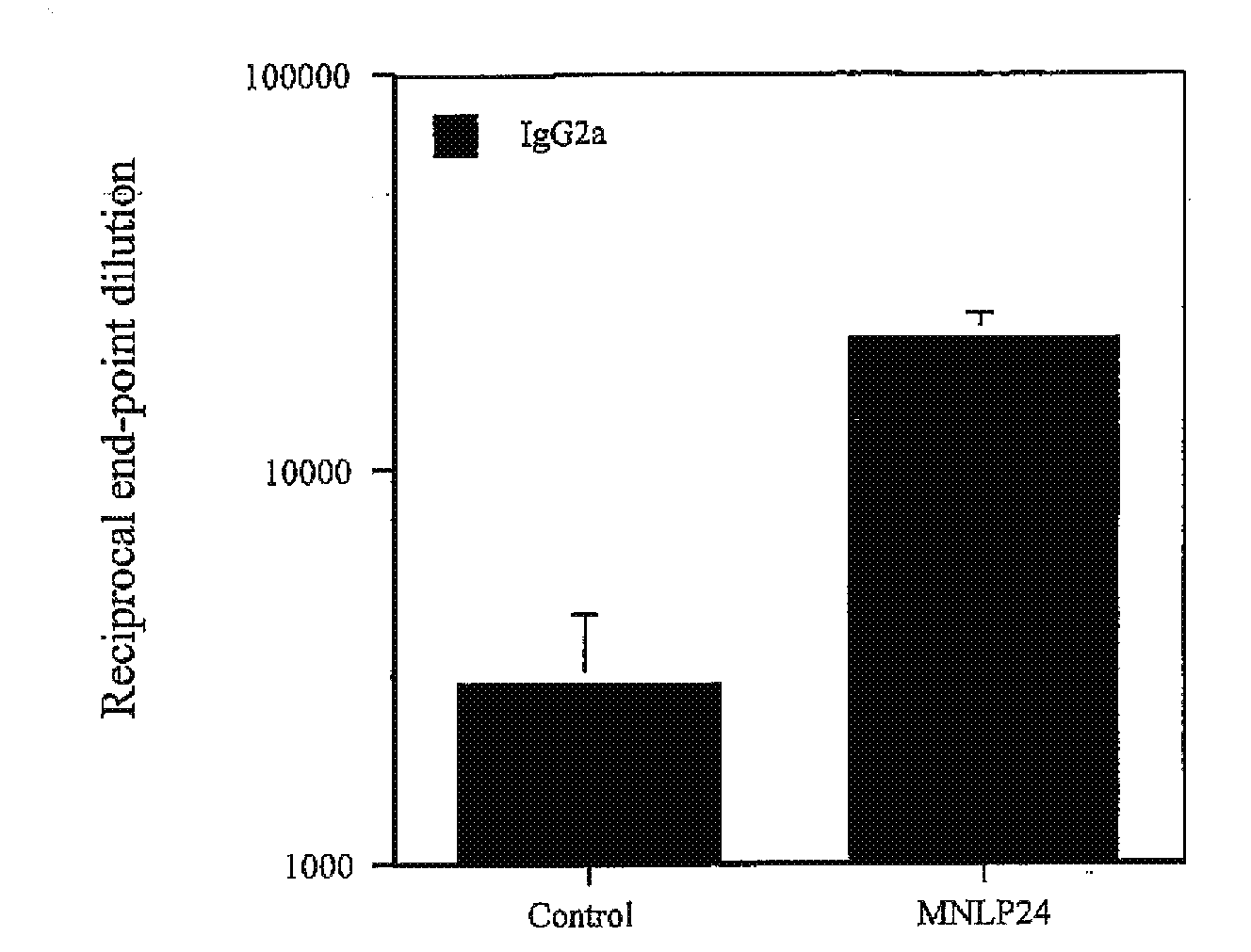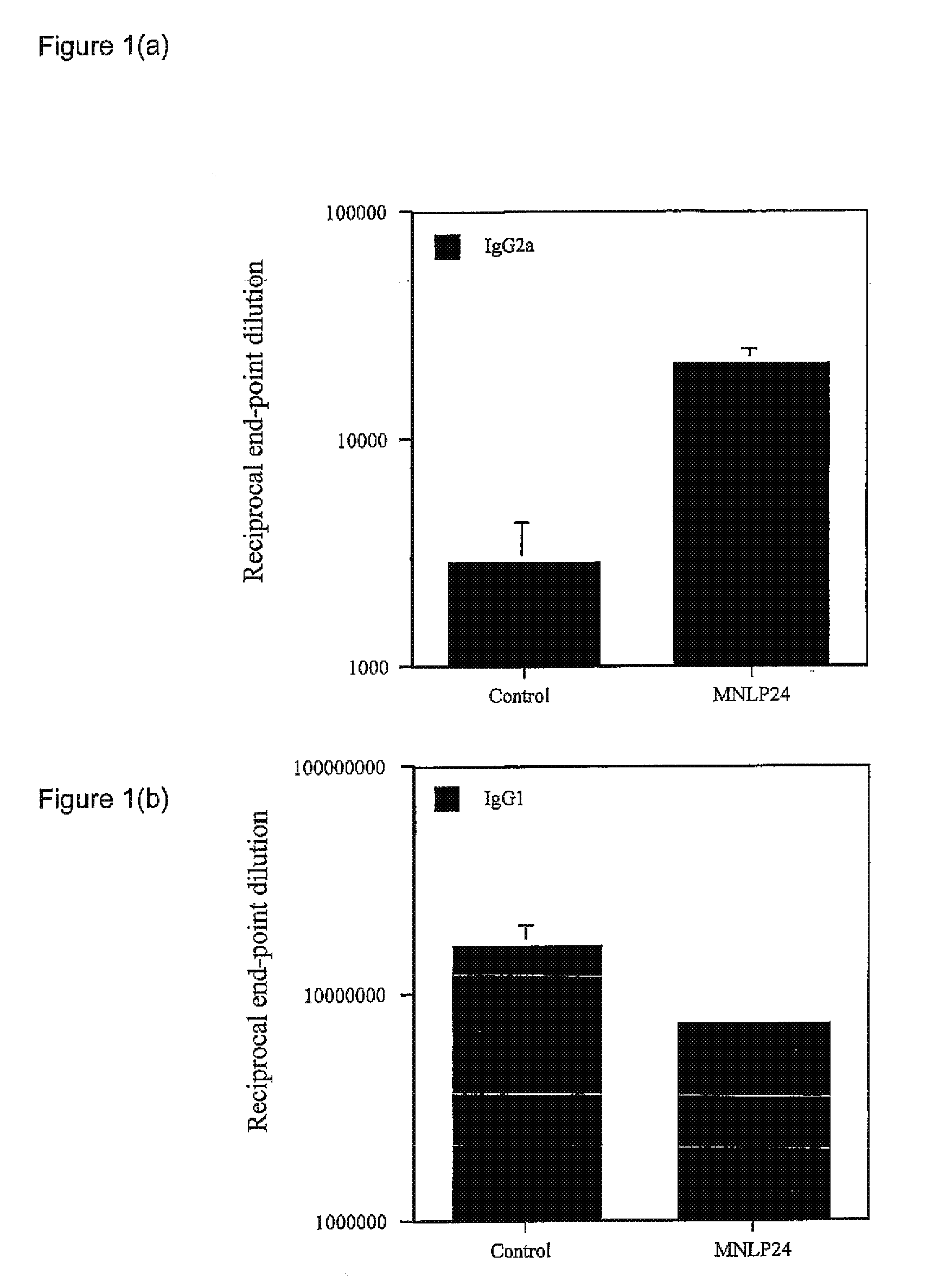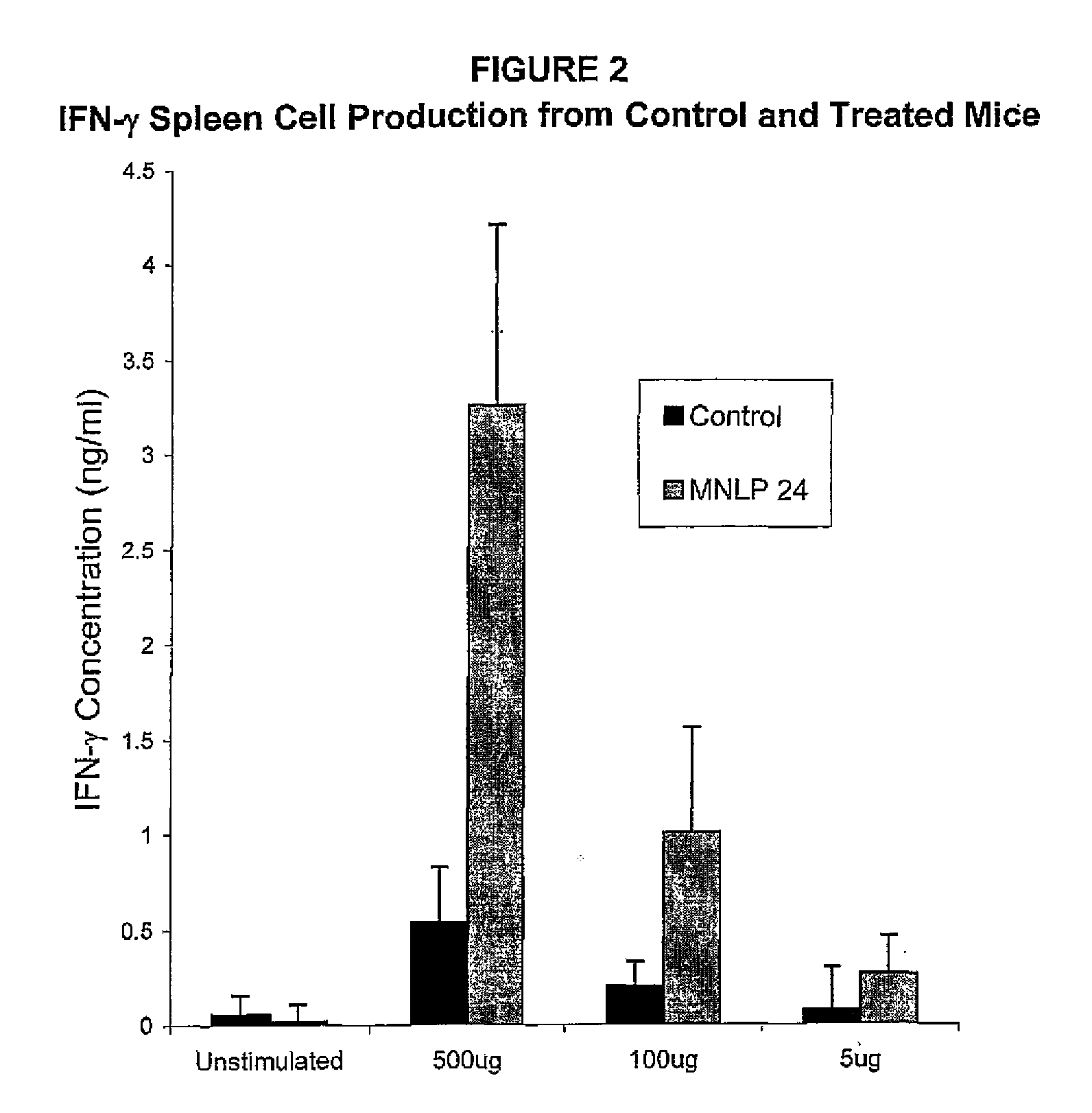Adjuvant compositions
a composition and adjuvant technology, applied in the field of adjuvants, can solve the problems of limited development and introduction of new whole cell vaccines, poor side effects, and general lack of pamps that are required for innate immune activation, and achieve the effect of balanced adjuvant activity profile and balanced alum/mf59-induced th2 respons
- Summary
- Abstract
- Description
- Claims
- Application Information
AI Technical Summary
Benefits of technology
Problems solved by technology
Method used
Image
Examples
example 1
Effect of 3,7-diepi-casuarine (14) on alum-induced Th1 / Th2 responses
Adjuvant Preparation
[0209]Alhydrogel (alum; purchased from Superfos BioSector a / s, Vedbaek, Denmark) was mixed with a predetermined quantity of highly purified ovalbumin (OVA; Worthington Biochemical Corporation, Lakewood, N.J.) with or without 3,7-diepi-casuarine.
Mice and Inoculations
[0210]All mice (BALB / c) were immunized subcutaneously into the foodpad with 100 μg OVA in 50 μl phosphate-buffered saline (PBS) mixed with alum and either PBS (control) or 3,7-diepi-casuarine (50 μg in PBS). Boosting inoculations were performed in the same fashion 2 weeks later, into the contralateral footpad.
Determination of Plasma Antibody Titres
[0211]Blood samples (tail bleeds) were taken 3 weeks after the primary inoculation. Enzyme-linked immunosorbent assays (ELISA) were performed as described in Brewer et al. (1999) J Immunol 163:6448-54 to detect OVA-specific IgG1 and IgG2a in plasma. Results were expressed as end-point dilutio...
example 3
Adjuvant activity of 3,7-diepi-casuarine (MNLP 24) with an optimum dose of influenza vaccine
Experimental Design
[0219]Three groups of 6 female Balb / c mice were vaccinated intramuscularly (i.m.) with a mixture of the influenza vaccine together with 3,7-diepi-casuarine on days 0 and 14. Each group received a different dose of 3,7-diepi-casuarine. Group B received a low dose, group C a medium dose and group D a high dose (20, 50 and 100 μg respectively), A fourth control group (group A) received only the influenza vaccine. Immunomodulatory activity was assessed by the determination of influenza-specific antibody responses in serum obtained at day 28.
Materials and Methods
[0220]Mice: 34 female, SPF-bred, BALB / c mice were obtained from a colony maintained under SPF-conditions at Charles River Deutschland, Sulzfeld, Germany, Twenty-four animals were allocated to the various groups by computer randomization. Mice were housed in type 2 macrolon cages in the same room throughout the study peri...
example 4
Synthesis of 3,7-diepi-casuarine (10)
General Experimental
[0233]All reactions were carried out under an atmosphere of argon at room temperature using anhydrous solvents unless otherwise stated. Anhydrous solvents were purchased from Fluka Chemicals and were used as supplied. Reagents were supplied from Aldrich, Fluka and Fisher and were used as supplied. Thin layer chromatography (Tlc) was performed on aluminium sheets pre-coated with Merck 60 F254 silica gel and were visualised under ultra-violet light and staining using 6% phosphomolybdic acid in ethanol. Silica gel chromatography was carried out using Sorbsil C60 40 / 60 silica gel under a positive atmosphere. Amberlite IR-120, strongly acidic ion-exchange resin was prepared by soaking the resin in 2M hydrochloric acid for at least two hours followed by elution with distilled water until the eluant reached pH 5. Dowex 50WX8-100 was prepared by soaking the resin with 2M hydrochloric acid for at least two hours followed by elution wit...
PUM
| Property | Measurement | Unit |
|---|---|---|
| Immunogenicity | aaaaa | aaaaa |
Abstract
Description
Claims
Application Information
 Login to View More
Login to View More - R&D
- Intellectual Property
- Life Sciences
- Materials
- Tech Scout
- Unparalleled Data Quality
- Higher Quality Content
- 60% Fewer Hallucinations
Browse by: Latest US Patents, China's latest patents, Technical Efficacy Thesaurus, Application Domain, Technology Topic, Popular Technical Reports.
© 2025 PatSnap. All rights reserved.Legal|Privacy policy|Modern Slavery Act Transparency Statement|Sitemap|About US| Contact US: help@patsnap.com



